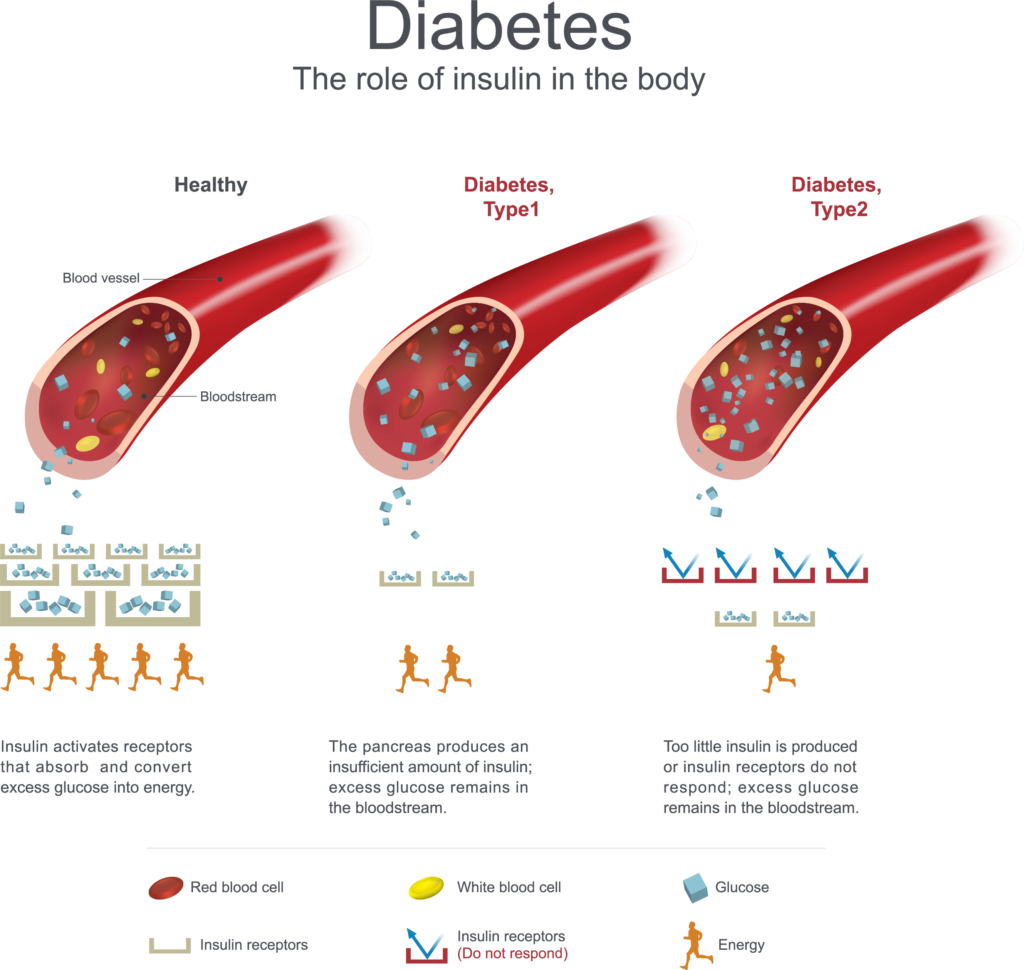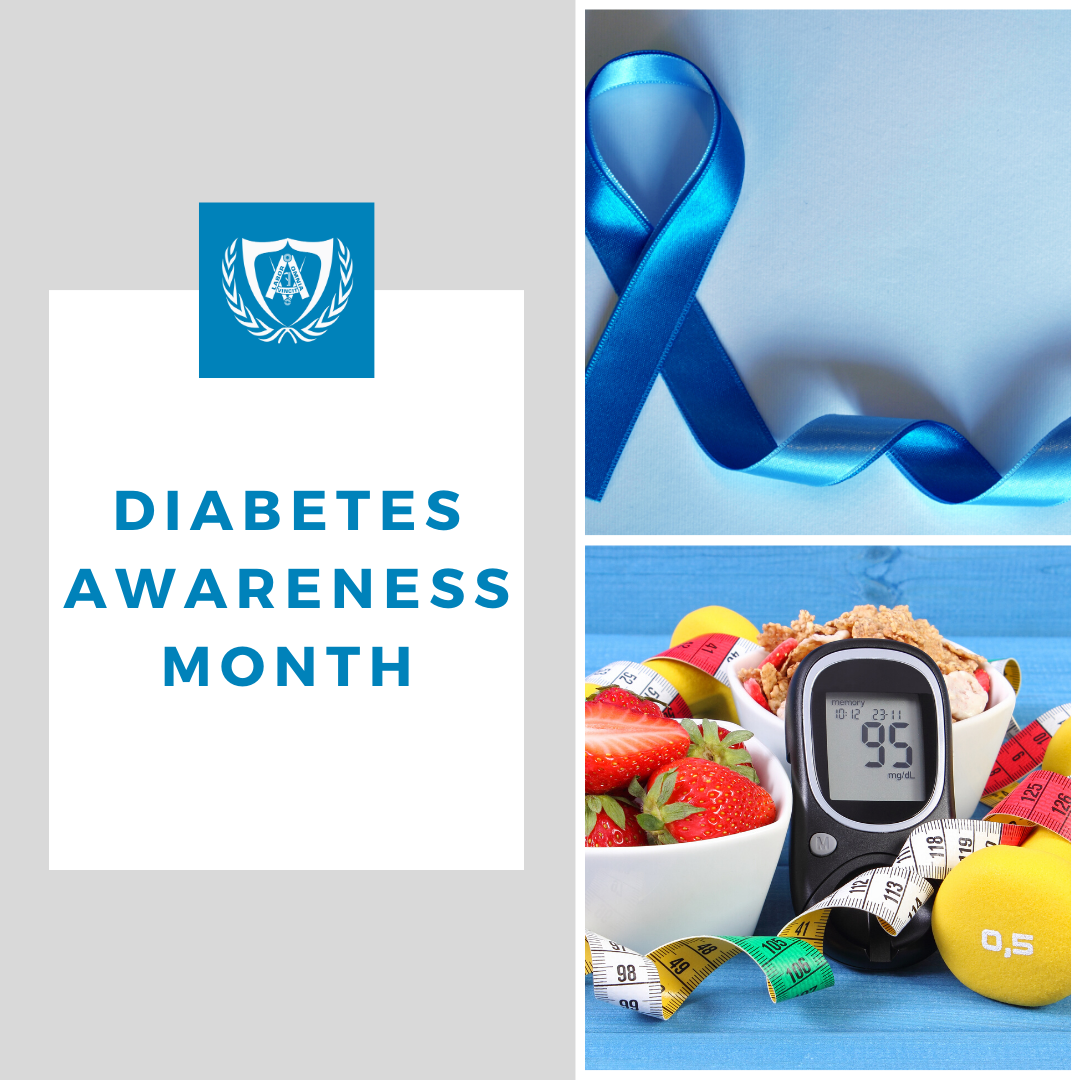This month we strive to boost awareness about the risk factors, symptoms, and types of diabetes.
Why should you care about Diabetes?
Diabetes effects 1 in 10 people in the US. That means 30 million people in the US have diabetes. It not only doubles your risk of dying sooner, it leaves you at a higher risk of serious health complications such as blindness, kidney failure, heart disease, stroke and loss of toes, feet, or legs.
National Diabetes Month is an annual event each November to boost awareness about the risk factors, symptoms, and types of diabetes.
We recommend these three tips to observe National Diabetes Month:
Commit to a healthier lifestyle
Discover ways that you can live a little healthier by reviewing your habits. Are you getting enough sleep? Fatigue can cause a resistance to the insulin your body needs — and daytime tiredness can stop you from getting some life-saving exercise. Drink more water because dehydration keeps your body from functioning well. Be adventurous and add some new veggies and fruits to your diet to help keep those hunger pangs at bay.
Assemble a “Sick Day” kit
It pays to be ready for those days when your diabetes or some other illness gets you down. With a “sick day” kit, you’ll be prepared in case you need to stay home and recuperate or head out to see your doctor. Some of the items in your kit may include blood glucose monitoring supplies, ketone test strips, glucose tablets or gel, a thermometer, hand sanitizer, an alarm clock or timer to stay on top of your glucose levels, and soft tissues. It’s your list so tailor it for your needs.
Create a small cookbook
There are restrictions on what people with diabetes can eat. But that shouldn’t stop you from enjoying tasty treats. Scour special cookbooks and websites designed for diabetics and experiment with recipes. Choose from delicious ice cream cakes using light sugar, reduced-fat whipped toppings, sugar-free hot fudge sauce, or low-cal casserole because you don’t have to suffer with less flavor because of diabetes.
What is Diabetes?
There are three main types– Type 1, Type 2 and Gestational.
- Type 1 diabetes can develop at any age, but occurs most frequently in children and adolescents. If you have type 1 diabetes, your body does not make insulin. Your immune system attacks and destroys the cells in your pancreas that make insulin. Insulin is a hormone that helps glucose get into your cells to give them energy. Without insulin, too much glucose stays in your blood. It is a lifelong disease and people with type 1 diabetes need to take insulin injections every day to stay alive.
- Type 2 diabetes is more common in adults and accounts for around 90% of all diabetes cases. When you have type 2 diabetes, your body does not make good use of the insulin that it produces. The cornerstone of type 2 diabetes treatment is healthy lifestyle, including increased physical activity and healthy diet. However, over time most people with type 2 diabetes will require oral drugs and/or insulin to keep their blood glucose levels under control.
- Gestational diabetes (GDM) is a type of diabetes that consists of high blood glucose during pregnancy and is associated with complications to both mother and child. GDM usually disappears after pregnancy but women affected and their children are at increased risk of developing type 2 diabetes later in life.





